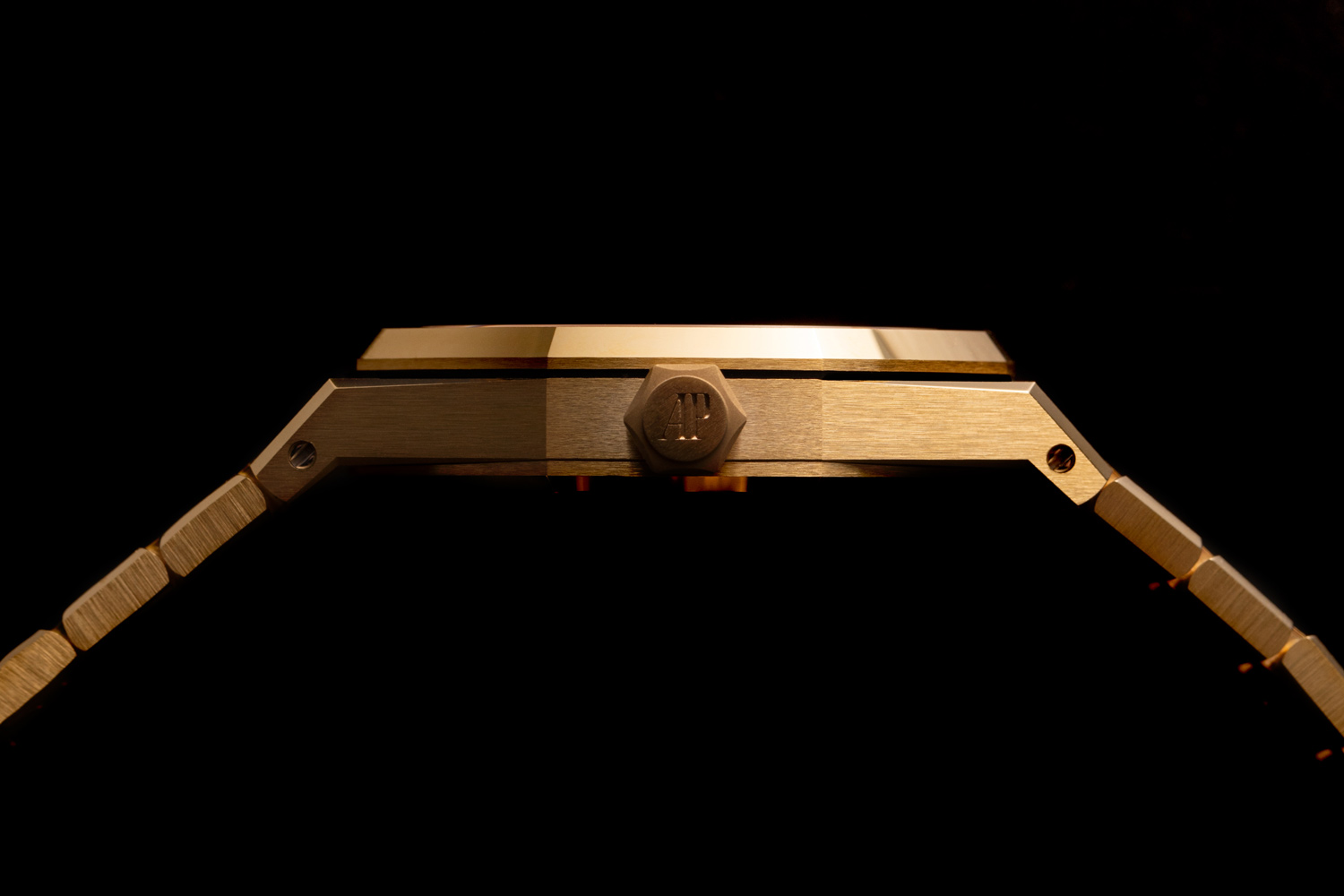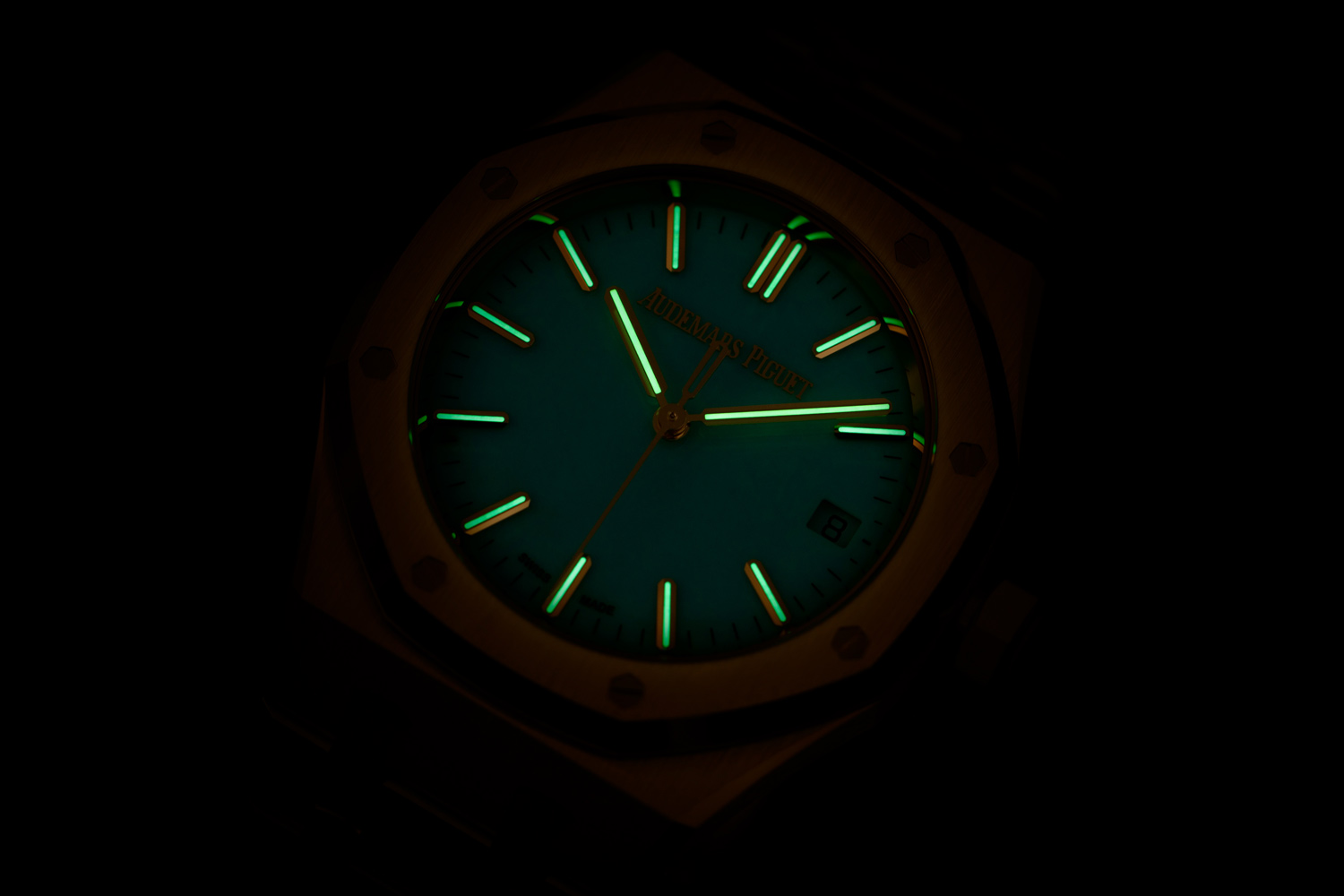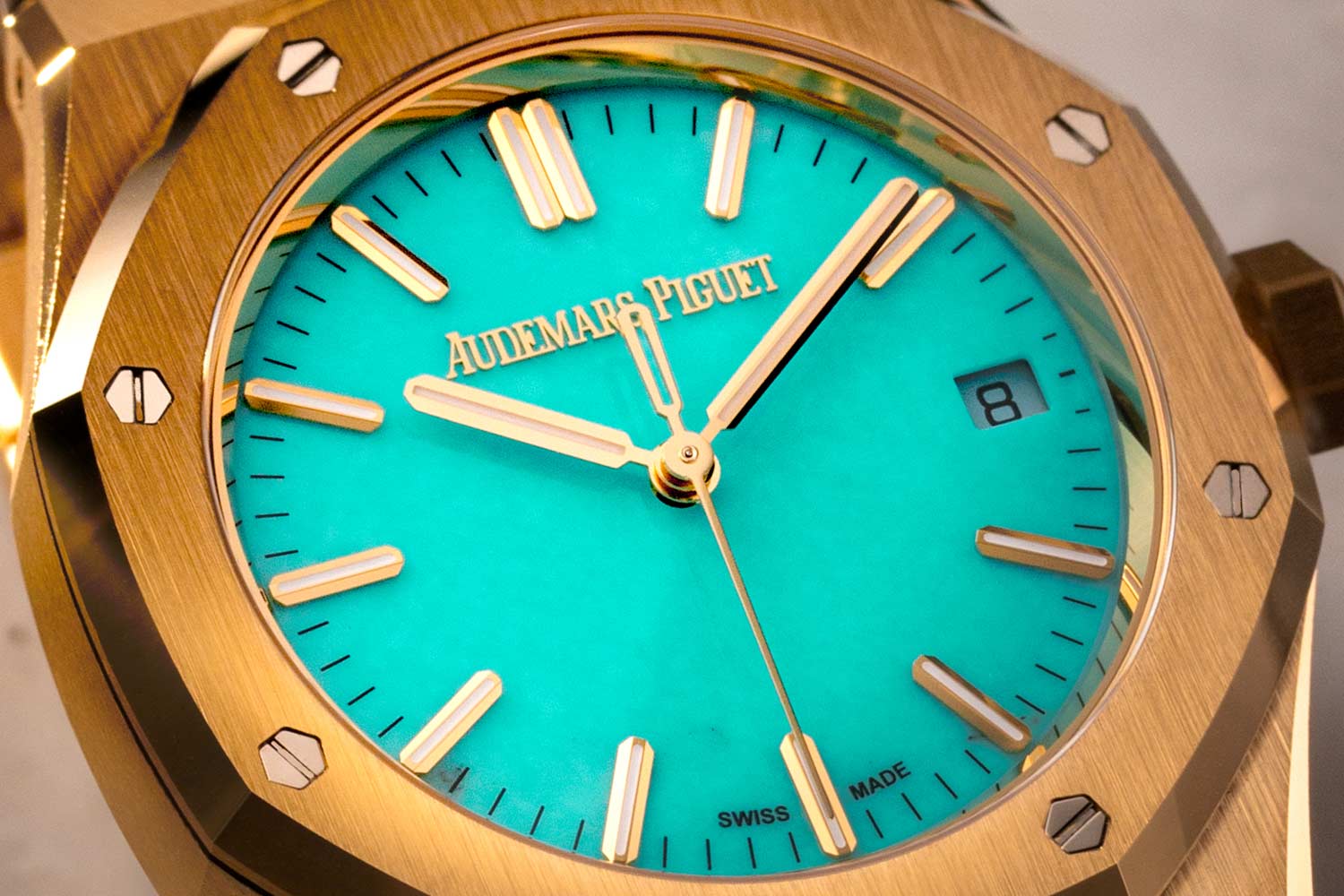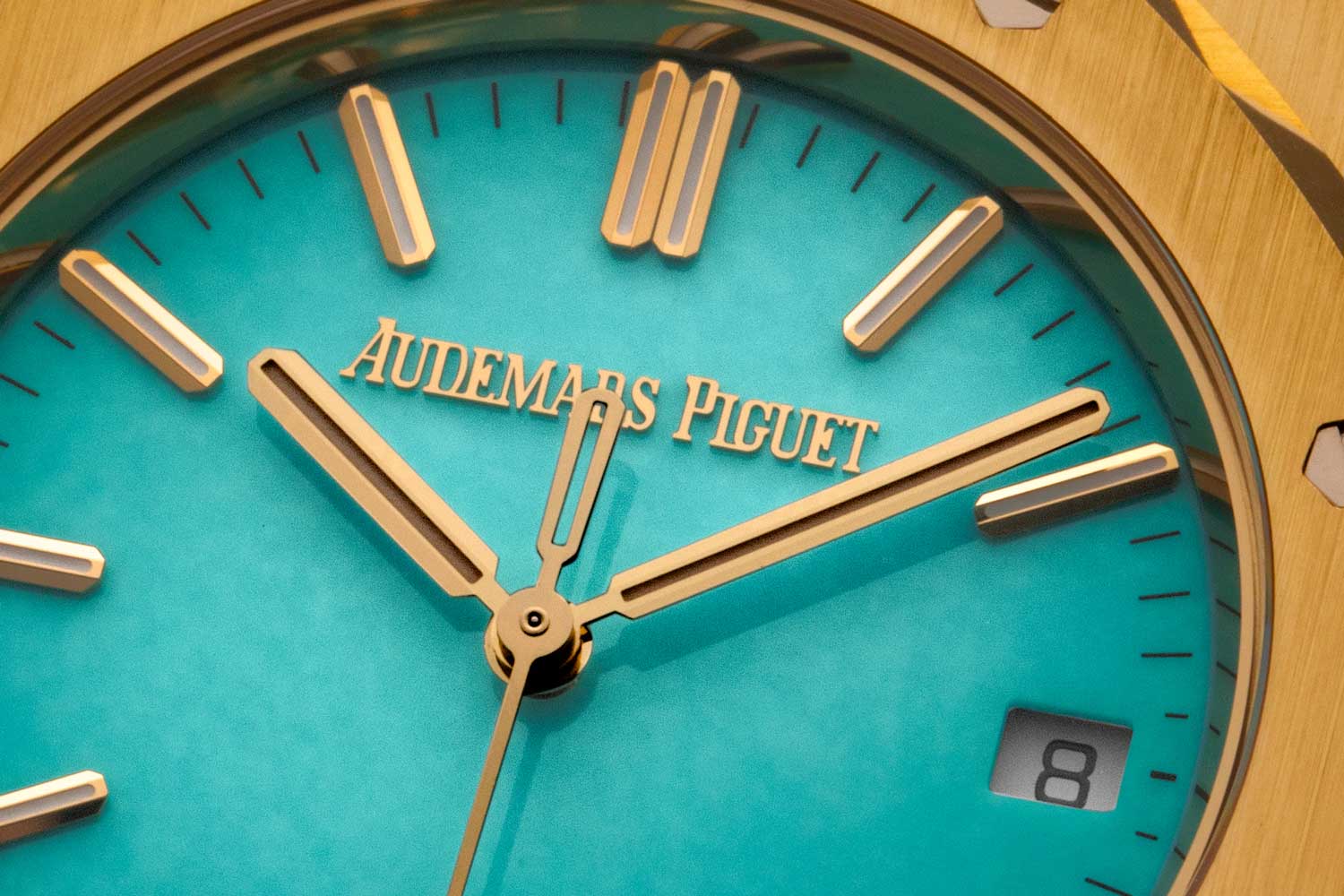Under the Lens: Audemars Piguet Royal Oak Selfwinding 37 mm “Turquoise”
Under the Lens: Audemars Piguet Royal Oak Selfwinding 37 mm “Turquoise”
Traditionally, each passing year brings forth new Royal Oaks, some in collaborative efforts and limited editions. For the year just gone, one distinct standout captured our attention – an ostensibly understated 37 mm Royal Oak, presented in full yellow gold with a turquoise stone dial.

How to pick your perfect luxury sports watch?
The initial step in choosing the ideal watch is straightforward – identifying the iterations that resonate with you. These are timepieces that evoke genuine passion, ones you would genuinely enjoy wearing, bringing a smile to your face. It’s a straightforward process, yet easily overlooked in a world where the significant investment value of a watch might overshadow personal preference.

The Royal Oak “Jumbo” ref. 16202
To assess a watch’s quality, several steps come into play. Firstly, a thorough examination of the design is necessary, considering how the different elements harmonize, evaluating proportions, visual depth, and the presence of details that invite prolonged admiration.
Following this, benchmarking becomes essential. Place the watch you intend to purchase alongside historically celebrated examples of the same family. For instance, this involves comparing a standard Royal Oak with the “Jumbo” Extra-Thin in as many aspects as possible. Evaluate everything from broad design strokes to the finer details like finishing on the case sides, bracelet link thickness, applied marker length and width, logo size, and the placement of the date window.

The elegant case side of the Royal Oak 37 mm “Turquoise”
After confirming that you genuinely like a watch and have acknowledged its quality, there’s still one last consideration, a crucial factor that distinguishes the exceptional from the merely well-crafted. To be clear, if you’re merely seeking something for personal enjoyment, with no plans to acquire another watch soon and no concern for its collecting value, you can disregard this. However, if you’re a frequent watch buyer aiming to curate a collection, this is important.
The final step is to assess whether a watch possesses the uniqueness to be deemed a collector’s timepiece. There are two types of uniqueness. The first is what can be termed as “special for the sake of being special.” For instance, a distinctive dial color that’s uncommon, even though it’s technically easy to execute. Its rarity lies not in technical complexity but in the watchmaker’s intentional choice to create a sense of uniqueness.
The second type of uniqueness holds a deeper meaning. It could be something technically challenging and noteworthy or something unconventional in terms of design – a departure from the norm or tradition in a meaningful way, signifying innovation in design that remains rooted in the tradition of the lineup.

The Royal Oak ref. 14701BC with a jasper stone dial. Image by Phillips.
A pretty special Royal Oak
But the new Royal Oak is not only unique because of the yellow gold livery but also, and perhaps more so, because of the dial. The signature tapisserie dial has been replaced with a piece of stone. How does it stack up?

A stone dial is luxurious, and so is a yellow gold case. Together, they make a killer combo. Despite its modest 37 mm size, it’s a watch that will stand out across the room and whatever attire you have. It’s an irresistably cheerful watch that simply puts a smile on your face.
More details
The first detail grabbing attention on the dial is the applied logo and markers, and opinions on this may vary. On the positive side, these applied indices significantly boost legibility, especially with the markers featuring a slim line of luminescent material. Moreover, the yellow gold markers impart a sense of high quality and warmth to the dial.


However, personal tastes vary, and this is solely my perspective. On a more objective note, the latest iteration seems to successfully accomplish its goal of being luxurious, bold, and eye-catching. In this regard, the bold markers and logo serve as a fitting complement to the striking use of colors and materials on the case and dial.

Compact workhorse movement
Similar to other time-and-date movements employed by Audemars Piguet, the cal. 5900 is a sports watch movement featuring a full balance bridge and free-sprung balance for enhanced timekeeping accuracy. These movements are essentially modern workhorses, known for their high quality yet efficient mass production, resulting in clean finishes largely facilitated by machinery.

What we think
Regardless of individual preferences concerning the dial design, it undeniably encapsulates a modern and bold spirit. This imparts to it an original and contemporary identity, setting it apart from its predecessors with stone dials in the Royal Oak lineup.

Audemars Piguet Royal Oak Selfwinding 37 mm “Turquoise” specs and price
Functions: Hours, minutes, seconds, and date
Case: 37 mm x 9.3 mm; 18k yellow gold; water resistant to 50 m
Strap: Yellow gold bracelet
Availability: At AP boutiques and AP Houses
Limited edition: No
Price: USD 61,500











